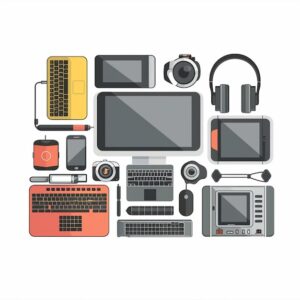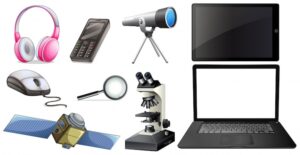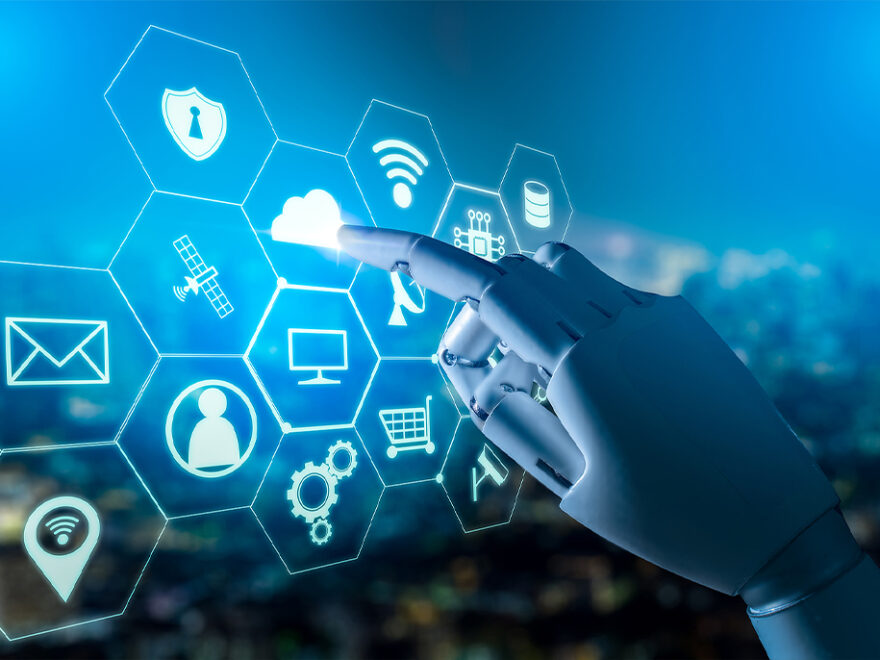Powering Modern Life: Deep Dive into Consumer Electronics 2025
Digital tapestry in the 21st century Consumer electronics have been woven into our lives. From the first moment we wake up to the alarm sound on your smartphone to the last program we watch before going to going to bed the devices influence our way of communicating working and learn as well as play and even live.
They’re tangible evidence of the rapid advancements in technology that are designed to increase comfort entertainment as well as efficiency for the average user. In mid 2025 the marketplace is booming for Consumer electronics continues to grow and evolve at an incredible speed fuelled by advances in the fields of artificial intelligence connectivity as well as miniaturization.
This complete guide will take you through the enthralling universe of Consumer electronics explaining the features they offer and tracing their fascinating history identifying the myriads of electronic products that are available and analysing the key technological developments.
that shape their products providing practical guidance on purchasing choices and thinking about their impact on our society. Knowing the field that is Consumer electronics is essential to comprehend the technological influences that are shaping our contemporary lives. Also check us What Exactly is cybersecurity

What are Consumer Electronics?
In essence Consumer electronics refers to the electronic devices that is intended for daily use by the end users intended for personal or non-commercial use.
In contrast to industrial or specialist electronics consumer electronics are intended to be easy easily user friendly and blend seamlessly into our pockets homes as well as our daily lives. They bridge the gap between the latest technology and mass market application.
The range is huge. Consumer electronics is vast covering all kinds of gadgets from basic battery powered ones to high end Internet connected gadgets. The primary purpose of these devices is serving the needs of individuals in relation to:
- Communication Making voice calls videos voice calls messaging as well as email.
- Information Access Surf the Internet for news reading as well as conducting studies.
- entertainment: Music playing playing games watching videos and engaging with digital content.
- productivity: Facilitating work learning and personal organisation.
- Automated and Convenience: Automating home functions and reducing the burden of daily chores.
- Health and Wellness: The monitoring of personal health indicators and encouraging fitness.
The most distinctive feature that distinguishes Consumer electronics is their immediate interaction with consumers and are designed to be user friendly instead of complex applications for professionals.
A Brief History of Consumer Electronics
The evolution in the history of Consumer electronics is an ongoing story of development miniaturization and expanding accessibility.
- The early 20th Century The Beginning of Electric Appliances: The first generation of electrical appliances for the consumer such as radios (1920s) as well as vacuum cleaners and washing machines paved the way for. They were mostly electromechanical however they also introduced the idea of home technology.
- Mid 20th Century: The World of Entertainment takes center stage: The advent of the television (mass market during the 1950s) and then the transistor radio (1950s) brought in the era of entertainment as an important driver of Consumer electronics.
- 1970s and the 1980s Personal Computing and Portability: The introduction of personal computers such as those of the Apple II and IBM PC changed the way we work. Additionally portable audio systems such as those of the Sony Walkman (1979) transformed audio entertainment for the individual making Consumer electronics truly mobile.
- 90s: Digital Revolution & Connectivity: The birth of the internet CD players digital cameras as well as early mobile phones signified change from analog technology to digital. Connectivity started to establish the new generation of Consumer electronics.
- the 2000s: miniaturization as well as the Internet explosion: the iPod (2001) revolutionized the world of music by showcasing the capabilities in digital platforms. But it was smartphones as demonstrated with iPhone (2007) iPhone (2007) and the iPhone (2007) that really ushered Consumer electronics into the era of unprecedented connectivity that combined computing communication and entertainment into one device. The mobile first strategy for the majority of Consumer electronics.
- from 2010 to the present Smart Everything and AI Integrity: The proliferation of broadband internet cloud computing and the development of advanced sensors has have led to the development of smart TVs smart devices for homes such as wearables smart devices and others fully connected to Artificial Intelligence (AI). Markets for Consumer electronics became larger than ever before in the past thanks to IoT as its primary focus.
This illustrative historical track provides clear pathway from single purpose bulky devices to modern multi functional and interconnected machines which have profoundly changed human interaction as well as daily routines.
Key Categories of Consumer Electronics
The wide array that is Consumer electronics can be classified into number of main segments. Each one is constantly developing with the introduction of new functions and technologies:

- Smartphones and Mobile Devices:
- Description: The undisputed kings of Consumer electronics providing computing communication imaging entertainment and navigation all in one handheld device.
- Current Trends Phones with foldable screens modern AI processors upgraded cameras as well as satellite connectivity. longer time to recharge.
Televisions and Displays:
- Description from traditional flat panel televisions to huge screen displays they are the primary centres for entertainment at home.
- Current Trends the OLED and QLED Micro LED and QLED technology for better picture quality higher resolution Smart TV platforms that have embedded AI voice assistants and ever slimmer models.
Audio Devices:
- Description: Includes headphones (wireless and noise cancelling) as well as wireless Bluetooth audio bars speakers as well as home theater equipment.
- trends: Spatial audio lossless streaming of audio longer battery life on audio devices that are wireless multi room systems as well as AI integration of adaptive audio.
Wearable Technology:
- description: Devices worn on the body for collecting information and sending alerts. Primarily fitness trackers and smartwatches.
- The latest trends in HTML0: Advanced health monitoring (ECG and blood glucose levels constant body temperature) and longer battery lives Fashion integration more autonomy from mobile phones. Wearables are the fastest growing category of Consumer electronics.
Smart Home Devices:
- Description: wide range of gadgets designed to automatize and link up aspects of your home. These include the smart speaker (e.g. Amazon Echo and Google Nest) Smart lighting and thermostats sensors security cameras robotic appliances and vacuums.
- trends: Greater interoperability (Matter standard) personalized AI improved security options and efficiency in energy use. Smart homes are an essential driver for the connected Consumer electronics.
Computing Devices:
- Definition: Laptops desktop computers (including All in Ones) as well as tablets.
- The future of HTML0: More powerful and efficient energy saving processors (especially the ARM based) with foldable screens improved security options and more integration with cloud services. The development of computing devices continue to transform efficiency within Consumer electronics.
Gaming Consoles and Accessories:
- description: Gaming systems that are dedicated (e.g. PlayStation Xbox Nintendo Switch) VR headsets for gaming as well as wide range of gaming accessories such as controllers gaming headsets as well as specialized monitors.
- trends: Ray tracer gaming in 8K cloud gaming greater immersive VR experiences and ongoing advancements in tactile feedback.
Cameras and Drones:
- Description Digital camera (DSLRs Compacts mirrorless compacts) and action cameras drones that are consumer grade for videography and photography from the air.
- The latest trends: Artificial Intelligence reinforced Image Processing and improved performance in low light conditions HD video recording long duration of drone flights and the most advanced obstacles avoidance.
Personal Care Electronics:
- Description smart toothbrushes devices for hair styling that have sophisticated sensor technology massagers with electronic sensors and many other products designed for individual grooming as well as for overall wellbeing.
- Current Trends Connectivity to apps for individualized routines AI driven input as well as ergonomic designs.
This wide array of products demonstrates how Consumer electronics cater to almost every aspect of modern life.
Major Technological Trends Shaping Consumer electronics
The technology engine that drives innovation Consumer electronics is driven by variety of overarching technology patterns:

- Artificial Intelligence (AI) Integration:
- The impact: AI is no anymore distinct feature and is now deeply integrated into Consumer electronics. AI powers voice assistants improves image processing in cameras and battery life. It also optimizes battery performance personalized content suggestions as well as drives the maintenance of smart home appliances. AI helps devices become smarter as well as more user friendly and more responsive in aiding users.
2. Internet of Things (IoT) and Connectivity:
- impact: The proliferation of connected devices that are internet connected creating the IoT is sign that gadgets can no longer be separated. Intelligent homes smart vehicles as well as integrated wearables interact with one another and with the cloud to create seamless ecosystems. The new connectivity standards such as Matter and Wi Fi 7 have further improved interoperability of Consumer electronics.
3. Miniaturization and Portability:
- Effect: Advances in chip design and battery technology make it possible to create more powerful devices with compact lightweight forms. It is possible to have completely wireless headphones slim laptops ultra thin notebooks and more sophisticated wearables comfy to wear for the entire throughout the day. The need for portability is major requirement for Consumer electronics.
4. Sustainability and Circular Economy:
- The impact: Growing environmental awareness is pushing the makers of Consumer electronics towards greener techniques. It includes recycling materials designing to ensure long term durability and repairability as well as reducing packaging waste and increasing the efficiency of energy use. People are more and more looking for eco friendly alternatives.
5. Augmented Reality (AR) and Virtual Reality (VR):
- Effects: While still in an early stage of widespread use VR headsets and applications could revolutionize the world of education entertainment as well as communication in Consumer electronics. From gaming that is immersive to virtual gatherings These technologies will provide new methods of interaction with online content.
6. Advanced Display Technologies:
- Effect: Continuous innovation in displays such as larger OLEDs with more brightness more precise Mini LEDs as well as the new Micro LED that delivers breathtaking visually immersive experiences that feature higher resolution greater contrast and brighter colours on phones TVs as well as wearable devices.
All of these trends contribute towards world where Consumer electronics are not just devices but intelligent and interconnected devices which adapt and anticipate our requirements.
Factors to Consider When Purchasing Consumer Electronics
navigating the huge market that is Consumer electronics can seem overwhelming. These are the most important aspects to take into consideration prior to buying:
- Needs and wants. Desires: Make clear what you require from this device. Do you need to replace an older model or do you really require new feature? Beware of impulse purchases based on advertising hype.
- budget: Set realistic budget. Be aware that the most recent and most advanced models are at an expense but earlier versions or models that are mid range are great value.
- Specifications and Features: Research the technical specifications applicable to your instance (e.g. processing speed of laptops camera megapixels on phones and refresh rate for televisions). Do not get swept away by figures; concentrate on what really affects the overall experience.
- Reputation of the brand and reliability: Choose reputable brands that are known for their quality reliability and good level of customer service. Reliability is the most important factor in ensuring long term happiness with Consumer electronics.
- Review and Ratings: Read independent reviews by tech reporters and most important user reviews on e commerce platforms. You should look for patterns that are consistent in reviews about quality and battery life software stability and customer support.
- Warranty and after sales service: Understand the warranty timeframe and also the accessibility of service centres near you. After sales assistance will save you lot of headache and expense later on. This is crucial when it comes to high end Consumer electronics.
- Ecosystem compatibility: Consider how new gadget will work with the existing ecosystem of technology (e.g. Apple Android Google Home Amazon Alexa). Integration with compatible devices can increase convenience and enable more functions.
- Sustainability Aspects Look for eco labels data on recycled content energy efficiency scores and the company’s commitment to reduce the amount of e waste generated and ensuring repairs.
If they take the time to carefully consider these elements they can make well informed choices that result in satisfying and long lasting investment into Consumer electronics.

The Impact of Consumer Electronics on Society and Daily Life
The widespread technology of Consumer electronics has fundamentally altered the way we live in many ways.
- Communications and Connectivity It has revolutionized the way people connect connecting us across geographical boundaries and making it possible to communicate instantly by means of messages calls as well as video conference.
- Education and Productivity Tablets laptops and mobile phones have been indispensable devices for learning and work that allow remote working as well as online classes along with access to wealth of data at our fingertips.
- Entertainment and leisure: from streaming films and music to an immersive gaming experience and even digital artwork Consumer electronics provide unlimited entertainment options that can transform your leisure time.
- Well being and Health Smart wearables and fitness devices allow individuals to track their health and health indicators and play more active aspect in their health.
- Economic Effects: The Consumer electronics sector is an enormous global economic engine which is major driver of innovation as well as creating jobs and having an impact on supply chains around the world.
- The challenges: The widespread adoption of Consumer electronics also presents challenges such as Digital gap (unequal access) and privacy concerns and security of data and the increasing issue that is electronic garbage (e waste) and its effects on the digital health (screen time as well as dependence). To address these issues, it is necessary to be an ethical manufacturing process responsible policy as well as conscious choices for consumers.
The Future Outlook for Consumer Electronics
The next generation of Consumer electronics promises more integration with our daily routines thanks to continuous technological advancements of AI IoT and the human computer interface:
invisibility technology devices will be more easily integrated with our environment and may even disappear in the background and operating in natural way without any visible interaction.
- Hyper Personalization: AI will enable devices to understand individual user preferences and habits at an unprecedented level offering highly tailored experiences and proactive assistance.
- Advanced Health Monitoring Wearables will expand beyond fitness monitoring to provide an ongoing non invasive and continuous monitoring of greater variety of health indicators that could help diagnose medical conditions in the early stages.
- Sustainable as Main feature: Environmental considerations will take on the role of main feature of design and marketing in Consumer electronics which will place greater emphasis on recyclability as well as repairability and the reduction of carbon footprint.
======================================================
